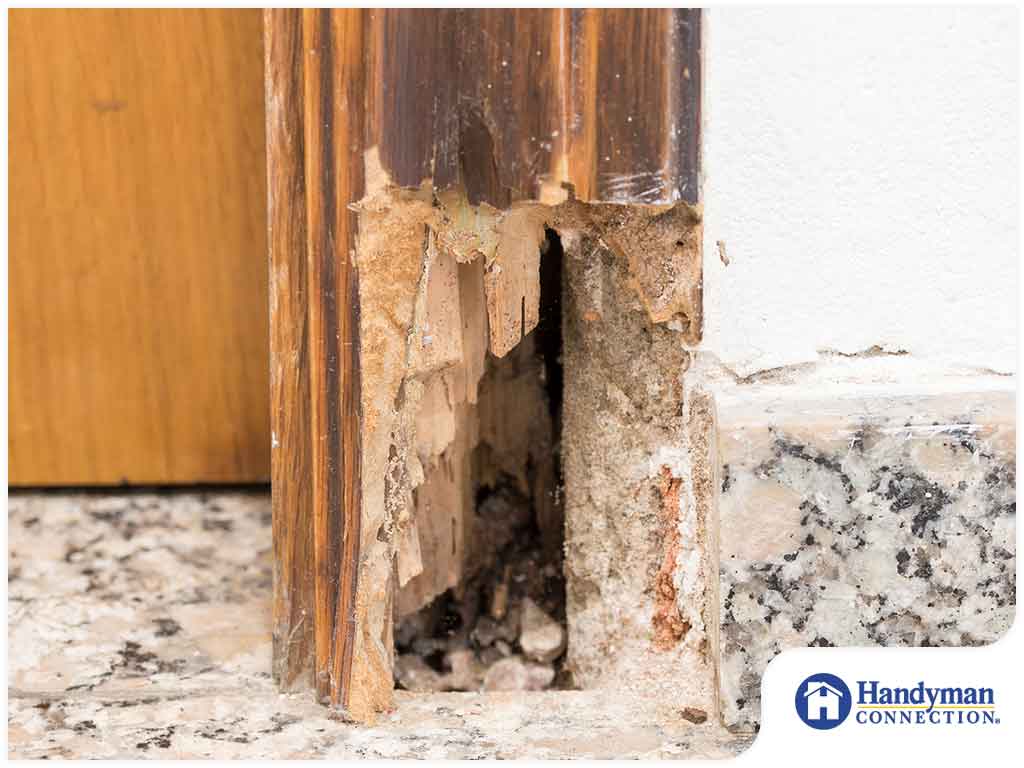Handyman Connection of Winter Park helps Florida homeowners prepare their homes for Christmas and the holidays with reliable interior and exterior repair services. Since winters in Florida are mild, it’s the perfect time to complete projects both inside and outside your home. From fixing wear-and-tear to improving curb appeal, our craftsmen handle the essential tasks that make your home safer, brighter, and ready for guests.
With pleasant outdoor temperatures, now is the ideal time for exterior home updates. Handyman Connection of Winter Park provides expert services to boost outdoor appearance, improve safety, and ensure your home feels welcoming for holiday gatherings. Whether you’re sprucing up your entryway, preparing your patio, or fixing outdoor features, we help your home look its holiday best.

Carpentry / February 11, 2020

Wood is one of the most-used construction materials, both for structural support and cladding. Wood rot is one of the most common problems that affect wooden parts, and is something that you should keep an eye out on. Read on as Handyman Connection® of Winter Park shares a look at how to identify wood rot.——————————————– CONTINUE READING ——————————————–Dry Rot Vs. Wet RotThere are two varieties of wood rot: dry and wet. Dry rot is somewhat a misnomer as it is actually caused by one or more species of fungi, with Serpula lacrymans and Meruliporia incrassata being the most common. Visually, dry rot is easy to identify: in its early stages, it looks like thin sheets of cotton growing on timber. Mushroom-like growths may also be present. As it spreads, deep cracks will run on the wood grain. When you firmly tap these areas with a long-handled tool, parts will fall off. Wet rot, on the other hand, is caused by contact with moisture. Unlike dry rot, wet rot is a natural process, and is not caused by an invading organism.Of the two, wet rot is easier to prevent. Simply make sure that the wood is coated with paint or a protective stain, and reapply them as needed. Sources of moisture must also be controlled, such as leaky gutters and plumbing, to minimize contact. Dry rot, on the other hand, is far more serious, and often requires removal of all infected wood parts. Fungicide may also need to be applied. Inspecting for Wood RotBoth types of rot have one thing in common: they happen in moist environments. If you have a leaky roof, chances are, parts of the attic, ceiling and walls may be affected. Inspect moist and closed environments like under the sink on within an unfinished basement for telltale signs. If your home is equipped with wood window frames, look out for areas where paint has started cracking, chipping or peeling.Large wood installations such as decks and gazebos are susceptible to dry rot, which is why remodeling contractors recommend adhering to a regular deck maintenance routine. If your home has wood shake or shingle siding and/or roofing, you should also make sure you follow their recommended cleaning and maintenance schedule.Handyman Connection of Winter Park is your leading provider of handyman services and home repairs. Give us a call at (407) 618-5550 or fill out our contact form to schedule an appointment.